 |

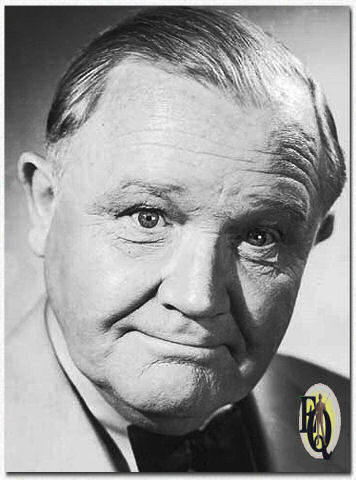

|
Height: 6' (1,83 m) Weight: 185 pounds Eyes: Blue Hair: Red Marriage: (1) Ellen Evelyn James (Jan 4. 1915 - May 7. 1943, his death) Children Louis Lanham Loftus (b. Aug 19. 1917), Douglas MacLean (b. Jun 28. 1920), James Clarke (b. Jul 8. 1921), Elizabeth (J.) Edith (b. Sep 27. 1923). Mason, Republican, Christian Scientist |
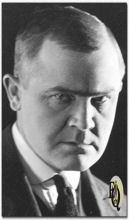 |
| Above right: Wade Boteler in 1921. | |
|
Wade Boteler was born on October 3, 1888 in Santa Ana, California, USA not long after his family moved from Missouri. Son of Richard Louis (M.D.) and Ella Conway. Wade's father was a private in the 4th Missouri Cavalry (Confederate States of America) during the War between the States. He was educated in Southern California schools. He originally intended to study medicine, but after one year he left it for the oil business, to which he devoted four years. According to the 1910 census young Boteler worked as a “tool dresser” in a California oil field, but soon relocated to the East Coast. Thereafter the enterprising young man decided to study music in New York. After a year in this direction he succumbed to the lure of the stage and "broke into" the profession via the stock route. Three years passed with various stock companies, followed by a season with Charles Frohman. He became a graduate of the American Academy of Dramatic Arts, NYC, 1913. For this school he taught play-analysis and stage mechanics, and directed modern drama for three seasons. He played in Liberty Stock Co., Pittsfield, Mass., summer seasons, 1912-13. He appeared on Broadway in a play called The Silent Voice (1914-15). Ellen Evelyn James of San Antonio, Texas (born 1891) was in 1913 a student in sculpture in the Art Students league in New York city destined to become much sought after. In fact, the possession of her picture was to be the ambition of countless millions. Why? Well, because Kenyon Cox had used Miss James as the model for the figure and head of "Plenty," a goddess appearing on one of the new $100 bills (below). |
|
 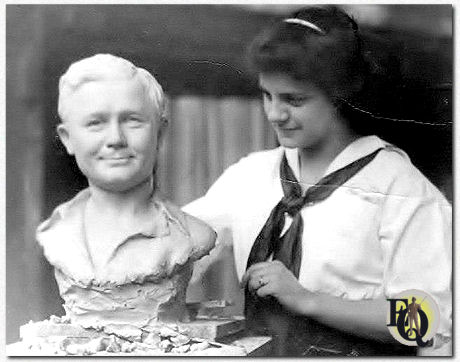 Above: Young Ellen Evelyn James posing with the bust she made of Wade Boteler (Picture courtesy Patti Boteler, all rights reserved) |
|
|
Halfway 1914 Miss James executed a
bust of one of her acquaintances, Wade Boteler. Charles Dana Gibson
pronounced it a marvelous piece of work. Mr. Gibson, who was acquainted
with Mr. Boteler, said that the likeness was as good as that of a
photograph. The model who inspired such a masterpiece must have been
more than an "acquaintance" even then. After graduation Wade became assistant director of instruction
at the American Academy of Dramatic Arts, (1914-16); played in N. Y. City
winter seasons (1914-16); with Burns Stock Co., Colorado Springs
(1916). By 1917 he was back in Texas,
where his first son Lanham Loftus was born. |
|

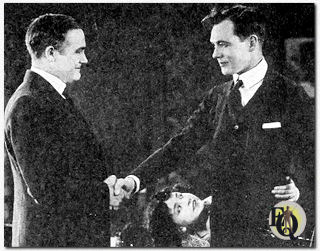 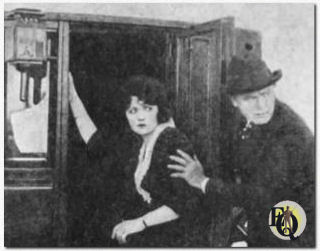 Above left: Charles Ray (right) in An Old Fashioned Boy (Paramount, Oct 31. 1920) opposite Wade Boteler (left). Above right: Bebe Daniels and Wade Boteler in She Couldn't Help It (Realart Pictures, Dec 1920). "Dramatic honors go to Wade Boteler, who presents an excellent character sketch of Tom Dorgan, the pick-pocket. Mr. Boteler's work is clean-cut and convincing, possessed of remarkable force and magnetic appeal." (Exhibitors Trade Review) |
|
"When the war was over I headed for Hollywood,"
Boteler said. "It seemed that most of America's players were doing
the same thing and our judgment that the future of the profession lay on
then unfamiliar stages of the studios seems to have been justified not
only by our own results but by the more recent imitation of Europe's
best talent. There seemed to be several methods of procedure in
Hollywood from which my contemporaries were meeting success. But for me
the only one method was feasible - I would take the best engagement I
could obtain and make of it the best character that I could accomplish.
And that is all that has ever been involved in my screen work." On to California where in films from 1919 onward, the stocky American actor hit his stride in talking pictures. He played in several Mack Sennett comedies and in movies such as The Home Stretch (aka When Johnny comes Marching Home) (Thomas H. Ince Co., April 24. 1921); Blind hearts (Associated Producers Inc., October 3, 1921); His Back Against the Wall, (Goldwyn, May 21. 1922); Boteler not only acted but also provided the story/ screenplay for several movies either produced by Douglas MacLean productions and/or with Douglas in them: Never Say Die (Aug. 31. 1924); Introduce Me (Mar 15. 1925); Seven Keys to Baldpate (Paramount, Oct. 19. 1925); That's My Baby (Paramount, Apr 19. 1926); Hold That Lion! (Sep 4. 1926); Let it Rain (Feb 12.1927); Soft Cushions (Paramount, Aug 27. 1927); ... It's even reported Boteler working on a stage play with Raymond Cannon (with whom he previously wrote the script for Introduce Me) to be presented in late autumn of 1927. After having worked with Douglas MacLean for several seasons both as a writer, director and as an actor, Boteler in 1927 commenced a free-lanced program which netted appearances in Warming Up (Paramount, July 15. 1928), The Baby Cyclone (MGM, September 27. 1928) and Just Married (Paramount, August 18. 1928), and he also played a featured part with Grant Withers in Fanchon Royer's Life's Like That (June 1928). |
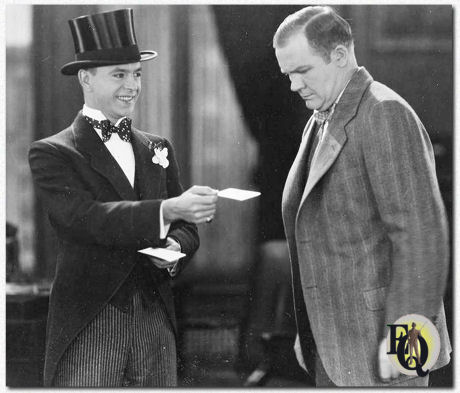 Above: Wade Boteler (writer and actor) and Douglas MacLean (L) in That's My Baby (Paramount, Apr 19. 1926). |
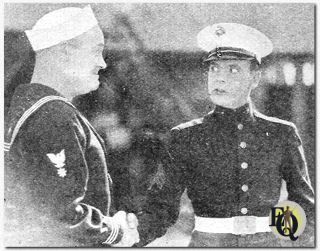 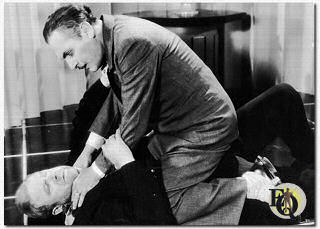 Above left: Let it Rain (Feb 12.1927) was as pleasant to watch as the smile of its star, Douglas MacLean (R) and just as light-hearted. A very funny Wade Boteler (who also worked on the screenplay) aided Douglas in the enmity between the sailors and the Marines. Above right: Lew Cody "strangling" Wade Boteler in the A. Edward Sutherland Comedy The Baby Cyclone (MGM, September 27. 1928), based on the play by George M. Cohan. |
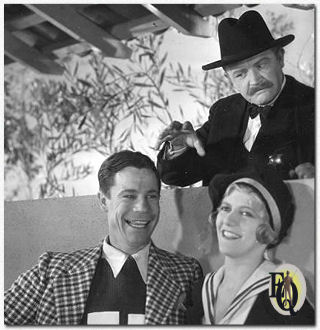 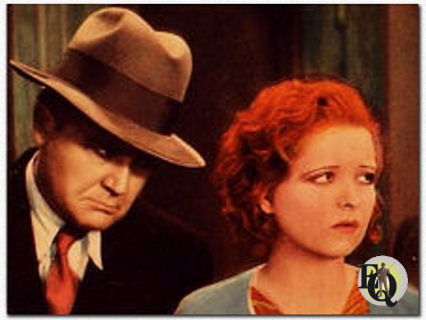 Above left: "They laughed and were happy, wholly unaware of the menace lurking in the background". Joe E. Brown and Laura Lee, comedy players in a First National-Vitaphone picture, Top Speed (Warner Bros., August 24. 1930). The danger is Wade Boteler. Above right: Wade Boteler (L) with Clara Bow in Kick In (Paramount, May 24. 1931). |
| Blessed with a pit-bull countenance, Boteler was in practically every other "B" western made between 1930 and 1935, often cast as a hard-hearted sheriff or crooked land baron. Affecting an Irish brogue, Boteler was also in demand for policeman roles or a gruff authority figure. So no surprise when he played Inspector Queen in the, easily forgettable, Ellery Queen movie The Mandarin Mystery (Republic, Dec 23. 1936) opposite Eddie Quillan (below left). |
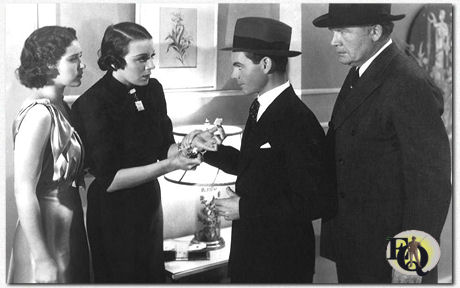 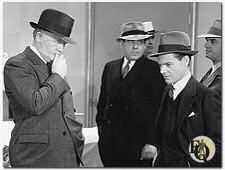 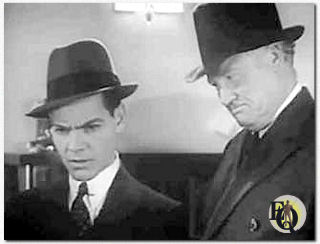 Top and above: Kay Hughes, Rita Le Roy, Eddie Quillan, and Wade Boteler in The Mandarin Mystery (Republic, Dec 23. 1936). Wade played Inspector Queen in this easily forgettable movie with Eddie Quillan as Ellery Queen. |
| He made his first sound serial in 1938–Universal’s cops-and-robbers chapter play Red Barry; based on Will Gould's comic strip, this outing starred Buster Crabbe as the titular police detective. (Above right) Boteler was cast as Inspector “Scotty” Scott, Barry’s police superior–and, unlike most serial officials, wasn’t relegated to simply sitting behind a desk and giving the hero orders; instead, Boteler’s Scotty frequently participated in shootouts and car chases right alongside Crabbe’s Barry. Boteler was easily able to make Scotty seem like a capable and toughly down-to-earth police veteran, and also did an excellent job of handling the character’s more human aspects; he was at once professional, affable, and fatherly in his interactions with Crabbe. |
 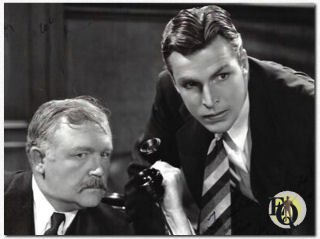 Above left: Wade Boteler (L) and Edward G. Robinson (R) in A Slight Case of Murder (Warner Bros., Mar 5. 1938). Above right: Wade Boteler (L) and Buster Crabbe in Red Barry (Universal, Oct 18. 1938). |
|
Buck Rogers (Universal, Apr 11. 1939), a futuristic adventure serial that starred Red Barry’s lead Buster Crabbe, gave Boteler a small but important first-chapter role as Professor Morgan–the scientist who, via radio, instructed trapped aviators Buck Rogers (Crabbe) and Buddy Wade (Jackie Moran) in the use of the suspended-animation gas that could alone save their lives (below left). |
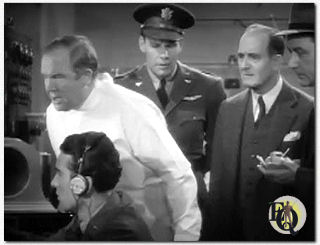 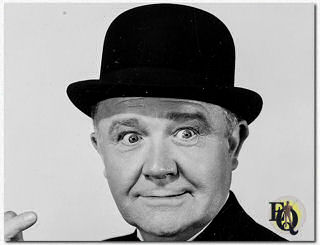 Above left: Buck Rogers (Universal, 1939), a futuristic adventure serial that starred Red Barry’s lead Buster Crabbe, gave Boteler a small but important first-chapter role as Professor Morgan. Above right: Wade Boteler as Michael Axford. in the 1940 serial The Green Hornet. |
|
His most effective lovable-Irishman stint was as conclusion-jumping cop Michael Axford in the 1940 serial The Green Hornet (above right); in fact, when fans of the Green Hornet radio version would ask Detroit station WXYZ for a picture of Axford, the station would send off an autographed photo of Boteler, even though Gil O'Shea essayed the part on radio. As the 1930s gave way to the 1940s, Boteler remained a very busy feature-film character actor–playing yet more policemen in many crime and mystery pictures for Warners and Fox, and portraying sheriffs and Army officers in several Republic B-westerns. He also worked frequently at Universal. |
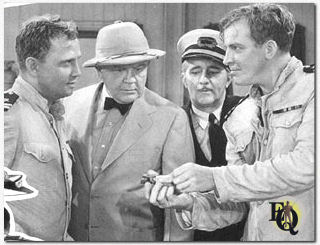 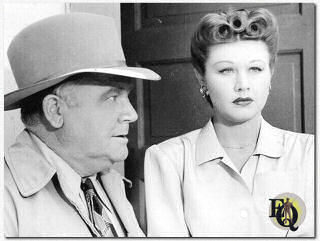 Above left: Boteler’s (second from the left) next serial role was in the pre-war espionage outing Don Winslow of the Navy (Universal, Chapter 4, 1942) Above right: Next to Marjorie Lord in Timber (Universal, Aug 1. 1942). |
|
In the pre-war espionage outing Don Winslow of the Navy (Universal, Jan 6. 1942) Boteler played Navy Intelligence operative Mike Splendor, Boteler served as a secondary sidekick to Navy commander Winslow (Don Terry), backing up both him and his primary sidekick, Lieutenant Pennington (Walter Sande). Boteler used his Axford brogue for the Splendor part, but the Navy character was considerably sharper than the Hornet one; though entertainingly feisty and outspoken (Picture right). Boteler’s final chapter play was The Secret Code (Columbia, Sep 4. 1942), a wartime crime serial that starred Paul Kelly as a police lieutenant who got himself dishonorably discharged in order to infiltrate and destroy a Nazi spy ring. Boteler played the supporting role of the stern Police Chief Burns. Wade Boteler died of a heart attack on May 7, 1943 in Hollywood, Los Angeles, California. At the time of his death he had 3 sons in the service. Due to the many films he’d completed before his passing he continued to appear in theaters. So Wade Boteler's final film was Warner Bros.' prophetically titled The Last Ride (Warner Bros. Oct 7. 1944), released one year after Boteler's death. |
|
Notes: All dates for movies are for the first US release. All dates for TV programs are original first airdates. All dates for (radio) plays are for the time span the actor was involved. Facts in red still need confirmation. |
|
Click on Uncle Sam if you think you can help out...!
|
|
Other references (1) Wikipedia (2) IMDb (3) IBDB (4) Wade Boteler part of 'The Files of Jerry Blake' (5) Patti Boteler Additional video & audio sources (1) Red Barry Clip Youtube (2) The Green Hornet Strikes Again Chapter 10 Blazing Fury |
|
This actor profile is a part of
Ellery Queen a website on deduction.
The actor above played Inspector Queen in one of
the
Ellery Queen movies.
Click Uncle Sam if you think you can help
out...! Many of the profiles on this site have been compiled after very careful research of various sources. Please quote and cite ethically! |
|
Page first published on November 1. 2017 Last updated July 18. 2024 |
 b a c k
t o L i s t o f S u s p
e c t s
b a c k
t o L i s t o f S u s p
e c t s
|
|
| Introduction | Floor Plan | Q.B.I. |
List of Suspects | Whodunit? | Q.E.D. | Kill as directed | New | Copyright Copyright © MCMXCIX-MMXXIV Ellery Queen, a website on deduction. All rights reserved. |